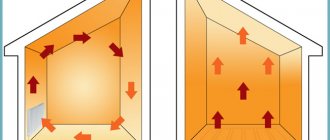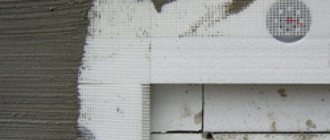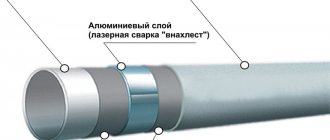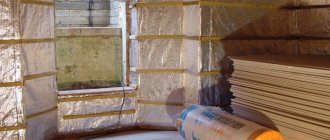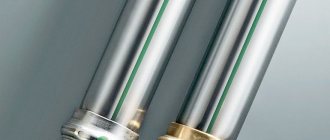New technologies for designing heating systems for low-rise private houses use several options for connecting all elements into one system. But no matter how advanced the technology, it is still impossible to bypass assembly using threaded connections in construction.
Crane groups, connections to heating registers and distribution units, all these points are connected using threaded connections. And if welding or soldering pipes allows you to create a reliable connection without the use of sealants, then if there is a thread, you cannot do without a sealant. And which seal to choose for installation is not as easy a question as it seems at first glance.
Main types of pipe seals
From the entire arsenal, the following can be distinguished:
- Linen
- Adhesive sealant
- Silicone
- A thread
- FUM tape
The question “which pipe sealant is better and which is worse?” - incorrect. In order to understand this question, it needs to be posed somewhat differently: “What type of sealing of threaded connections should be used in specific conditions?”
Let's start with what sealant should not be used for threaded connections:
- Silicone (good for flange connections);
- Ship's red lead;
- Whitewash, various types of paints.
So, there are 4 types of material left:
- Linen;
- Thread;
- Adhesive sealant;
- FUM tape.
Seal flax
Flax for winding threaded connections
You can use flax as a winding for pipes on all metal parts: brass, cast iron, steel. With limitations, flax can be used where metal threads are soldered into plastic threads. A bad option would be to use linen on completely plastic parts. When sealing threaded connections where the sealant is flax, a large tightening torque is required. This moment can sometimes exceed the capabilities of plastic parts, which is why it is possible to break the thread itself.
Why is additional sealing of threaded connections necessary?
So, before moving on to choosing the optimal option for sealing threaded connections, it is worth carefully studying all the options where this installation method can be used. In the heating system of an apartment or house with a gas double-circuit heating boiler, the threaded connection units will be used:
- On cold water supply taps from the water supply system;
- On the gas supply valves to the boiler there is a gas valve from the gas pipeline, a gas filter and the inlet itself into the boiler;
- On the hot water supply pipe to consumers;
- On the supply line of hot coolant to the heating system;
- On the pipe for the return supply of cooled coolant to the boiler;
- At connection points for heating devices - at the inlet and outlet of the radiator;
- On the heated towel rail (if there is one);
- There is a heated floor at the line distribution node in the system.
This number of points where a threaded connection is used is far from complete, since it describes only the minimum version of the heating system for an ordinary apartment. But even in it, each node has its own characteristics. So, for gas equipment, and a gas heating boiler refers specifically to this type of equipment, the connection of the gas pipeline must be done in strict compliance with the rules. Here it is necessary to make a reliable seal to prevent the leakage of natural gas.
At the connection point for the direct and reverse coolant supply, it is necessary to make a seal, taking into account the fact that when the coolant heats up and cools down, the metal parts will expand and contract. This means that the hermetic seal must withstand not only the maximum expansion of parts, but also ensure integrity during uneven expansion or contraction of the connection when the temperature drops.
The joints of heating radiators will also experience such mechanical stress, because when hot coolant is supplied, the metal, especially in cast iron batteries, expands more slowly than in shut-off valves made of brass or aluminum alloy.
And of course, in addition to the temperature factor, the seal must also take into account the chemical factor, because with repeated heating and cooling, the chemical composition of the water changes. Not to mention that in some systems, instead of the usual prepared water, antifreeze is poured or chemicals are added to prevent the water from freezing in the event of a breakdown.
Now that you can see how many problems can arise when operating a heating system with a minimum number of threaded connections, the importance of installing seals during installation becomes obvious.
Plumbing thread
Sealing threads with plumbing thread
Plumbing thread is an excellent winding material for pipes with one drawback: its high price. It cannot be torn by hand and is suitable for sealing all threaded joints (even those that have a torn surface from a bad thread cutting tool). As for plastic parts, the tightening torque required when using threads is not the same as when using flax. Plumbing thread can be used for all parts.
Types and characteristics of threaded connections in the heating system
Today, when installing almost all heating systems, both new types of connecting elements and traditional options, where threads are cut on steel pipes, are used. Each type of carving has both positive aspects and disadvantages.
To choose the right seal, it is worth considering all the elements in more detail.
Cast iron radiators
For connection, both modern options are used in the form of fittings with American females, and traditional ones in the form of pipe bends on couplings with locknuts. The thread in the cast iron body of the radiator nut has chips and irregularities, and can also be cut at an angle, which complicates the selection of threads on the fitting. In this unit it is necessary to use a sealant that will ensure reliable filling of all voids along all thread turns.
Drives and couplings
Threaded connections of pipes and couplings also have their disadvantages. During work, the thread is cut with a margin of 3-4 turns, while the pipe profile itself may have significant deviations. Simply put, it may not be round, which is why the threads are of different depths and profiles - from triangular with an acute angle to trapezoidal. A nut and coupling made of cast iron may also have thread defects in the form of chips, broken threads, different heights and depths of threads. Such a connection requires that the seal not only fill all the cavities, but also be elastic - when screwing a cast iron coupling onto a rigid seal, it can simply burst.
Fittings with American women
Fittings with American females produced by well-known manufacturers of shut-off and connecting valves have standard threads made in accordance with high quality standards. At the same time, this threaded connection also requires sealing since the thread most often has great depth and clear edges.
Anaerobic sealant
Anaerobic sealant
Anaerobic sealant is certainly suitable for sealing all plastic threaded connections, for brass, for cast iron, factory-made, but there is one peculiarity on steel parts.
When threads are made in a steel part, various types of lubricants are used that get onto the threads. When applying glue, once it hits a greasy area, it lingers there. This may not be noticed. Once the coupling begins to be turned, a channel may form through which the liquid will then flow out.
It is not always possible on site to remove grease from the surface of the thread. Therefore, it is not recommended to use glue-sealant as a sealant for steel threads and parts, since there is flax and thread.
When using sealant, pay attention to what kind of adhesive sealant you got. Some grades require heating when disassembling the joint. Imagine a metal connection with a metal coupling followed by a plastic pipe. To disassemble it, you must first heat it up (obviously more than 100 degrees). For the metal part this does not matter, but the plastic pipe may later be damaged. Therefore, look at what type of threaded connections you seal with sealant!
How to seal a joint with flax?
When sealing threaded connections, you need to be very careful. Accuracy is the key to ensuring that nothing leaks. When working, you will need a special paste, which you cannot do without. It can be applied to the thread immediately or to already wound flax.
Paste gets your hands dirty. It's not very pleasant to wipe them off. Therefore, there is a life hack - the installer first sits down, winds flax onto a threaded connection, checks the quality of the winding (everything should be smooth) and then uses the paste, making a dozen connections at once. The connection must be free of protruding hairs, the first two turns remain free so that you can safely screw the coupling onto the external thread. And towards the end of the thread a roller or thickening is formed.
All compaction occurs on the last two threads. They are not completely cut through, smaller than the other turns. They are sealed by gluing the sealing material between the two parts.
Materials for sealing threaded connections
Today there are no highly specialized materials for sealing one or another type of threaded connection. The materials on the market are applicable to almost all installation points and materials, however, provided that the work is carried out by an experienced specialist. Therefore, it is important to know and understand all the strengths and weaknesses of sealing materials.
End gaskets
Installing a sealing end gasket between parts in modern heating systems has very limited use. At the same time, this option can well be used for end-tightened connections. For installation, paronite, fluoroplastic or rubber gaskets are used. The positive side of this method is the ease of installation and reliability of the connection. The clamped gasket between the two planes ensures both tightness and reliability of the connection. The disadvantage of this method is that when clamped, the gasket is deformed, and quite often it simply narrows the internal lumen. Such a narrowing negatively affects the fluid flow rate, which ultimately leads to a loss of temperature in the coolant and slow heating of heating devices.
Another disadvantage is the need to carefully prepare the joint surfaces so that during installation there is no misalignment of the gasket. For those who do not have experience installing such gaskets, it is recommended to have 1-2 gaskets in stock, since if installed incorrectly after disassembly, the gasket is not reused, but replaced with a new one. Another tip is that it is recommended to apply sealant to the gasket before installation to ensure that all voids are filled as tightly as possible.
It is recommended to purchase gaskets for installation for heating systems, although almost all gaskets made of rubber, paronite and fluoroplastic can withstand temperatures of +100-120 degrees, not all react equally to contact with water and antifreeze.
FUM tape
PTFE tape is actively used for installation of water intake fittings for hot and cold water supply systems. It is also used for heating systems. Compared to other types of materials, it is easy to use, perfectly seals the connection and does not lose its properties during operation. The latter is very important when carrying out repair work - such connections can be easily dismantled even after many years of active use.
FUM tape is available in several sizes, which allows you to choose the right option for the job. A positive point is that it does not react with water and antifreeze. It also easily withstands high temperatures and repeated heating-cooling cycles.
However, when working with it you need to consider:
- When sealing connections with very tight threads, it will tear and be squeezed out when screwing on the thread;
- If the connection is not tight, leaks are possible, since the tape is not able to adhere to the metal and expand in volume upon contact with water;
- When used, it is most effective on connections up to 25 mm, so when screwing a plug or nut into a cast iron battery, it is worth using another material for sealing.
Sealing thread
This is a relatively new material for filling cavities between joint parts. The thread is made of Teflon or fluoroplastic. Therefore, it has approximately the same properties as tape. But, given that it has a different cross-section and fills the cavity between the turns more tightly, its use for sealing becomes more attractive.
In addition, there are samples of plumbing thread that consist of several fibers; these types are recommended for use with liquid sealants.
Hemp or linen span
A material of plant origin traditionally used in sealing threaded connections. To seal threaded connections, it is used in conjunction with liquid or gel sealant.
Flax is used for installation in connections of large and small diameters. When used correctly, linen can last quite a long time. The truth has significant drawbacks:
- Not everyone can wind a flax span correctly and not the first time; the work requires experience and dexterity;
- As a material of plant origin, it has a limited service life;
- Reacts to changes in temperature and humidity, reacts to chemically active substances;
- During repairs, great effort is required to separate the joint, which was sealed with flax span.
Chemical sealants
The basis for the production of this group of materials is silicone. Among the advantages of silicone is its stability at high temperatures and neutral reaction with most chemically active substances.
During installation, silicone sealants provide lubrication of rubbing surfaces, making it easier to twist threads. After installation, the substance fills all cavities and ensures reliable connection.
There are drying and non-drying sealants. When sealants dry, after a certain time they become viscous or turn into a solid state. This group distinguishes between sealants that dry when exposed to air - the anaerobic type and substances that change their state upon contact with water.
The disadvantage of this group of sealants is that when they dry, they shrink, which means that over time, the coolant may start dripping in this place.
Non-hardening sealants remain liquid or gel-like for a long time, so such materials are easy to apply and, even after prolonged use, the joints are easy to dismantle. On the other hand, during installation and operation, there is a high probability that such sealant may be squeezed out of the thread.
How to apply adhesive sealant?
It is impossible to apply sealant to many joints at once, as with flax. The glue is applied to the thread immediately before the “sausage” connection, which is then well spread over the entire thread. This is necessary to prevent empty spaces from appearing through which water can then seep through.
The threads should be checked after sealing the connection. Therefore, sealant is used quite rarely, in the most necessary cases. For example, when you need to connect a plastic part with a metal one, you can’t think of anything better than glue.
The manufacturer recommends applying sealant to only one part, but experience says otherwise. If you are sealing a threaded connection that will be difficult to get to, then apply the glue well with your finger to the coupling and threads so that there are no unpainted areas anywhere. It has a blue or red color, it is clearly visible. It is necessary that all the streams are filled and then the parts can be connected. For steel parts, it is better not to use glue as a sealant for pipes.




